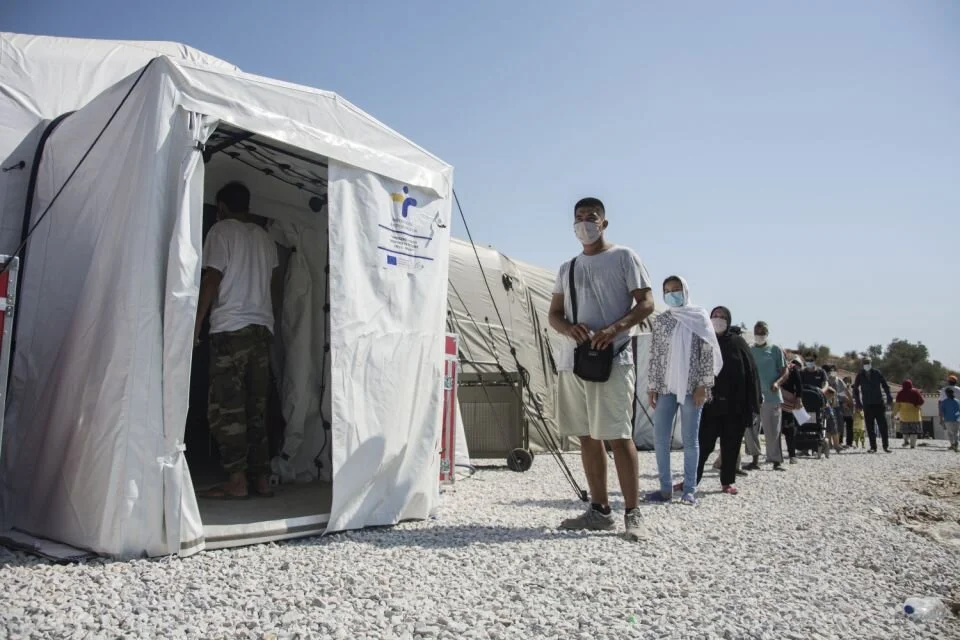- Refugees and the COVID Vaccine -
By Eva Bayer
Today, over a year since COVID-19 patient zero turned our global reality upside down, many of us are eagerly squinting to see the light at the end of the metaphorical tunnel. Thanks to the spectacular efforts of scientists around the world, we are in the initial stages of a vaccination program. Finally, it feels like the beginning of the end.
But for many refugee populations, this beacon of hope is little more than a cruel reminder of their status as the world’s have-nots. In perhaps one of the most blatant examples of large-scale disregard for refugee health, Colombia announced that it will not provide vaccines to Venezuelan refugees in the country without formal status. This puts just shy of one million people in a perilous position. Experts agree that this policy is both an ethical and epidemiological disaster. Marianne Menjivar, Colombia director for the International Rescue Committee, summarized the issues well when she explained that “We can’t beat Covid anywhere until we beat it everywhere, among all populations, especially those most vulnerable.” Such a massive community of unvaccinated individuals, especially one that already faces exceptional hardship in maintaining total social distancing and getting access to healthcare and adequate sanitation, can only spell trouble for the greater Colombian population. Leaving refugees out of the vaccination rollout picture is simply not an acceptable option. In fact, some have referred to the policy as tantamount to “biological ethnic cleansing.”
More generally, how can we ensure that refugees are not left out of the global vaccination narrative? While it is clear to many how they need to be protected during this pandemic, ever since March, a moral calling to “do the right thing” has repeatedly failed refugees, asylum seekers, and foreign-born migrants. For instance, at the start of the pandemic, England provided housing to thousands of previously refused asylum seekers. In September though, as cases continued to climb, they were suddenly served eviction notices. Unfortunately, leaving these communities behind is often the easiest path to choose, and even initially positive policies often eventually falter. Ferdinand C. Mukumbang makes a rather convincing argument on how to ensure refugees, asylum seekers, and foreign migrants are not left behind in the vaccine rollout. COVAX is the initiative in which many richer countries are pooling resources to ensure equitable vaccine access in 92 lower-income countries. Part of the conditions of the plan involves no country receiving more than enough doses to cover 20% of its population until all countries participating reach that threshold. This initial 20% is to cover senior citizens and other high-risk groups. Mukumbang posits that refugees, asylum seekers, and foreign migrants not only meet the definition for vulnerable populations, but that their formal inclusion in the program is necessary to pandemic resolution.
When it comes to vaccines though, allocation is just one side of the die. Skepticism about unfamiliar science is no surprise and can be found in virtually every community. In immigrant and refugee communities in particular though, there are cases of understandable distrust. This is especially true amongst the black community in the United States, where the tragic legacy of medical malpractice, epitomized by the horrors of the Tuskegee Syphilis Study, fuels skepticism. Based on the lessons from past public health programs amongst marginalized communities, this uncertainty can be addressed through the following guiding principles, as stipulated by Joey Peters for the Sahan Journal. Firstly, community leaders must be educated on the importance of the vaccine program, and promote it to their community from their position of trust. Next, the community members themselves must lead discussions. Lastly, there should be incentives to get the vaccine. These lessons are taken from a study on tuberculosis in East African immigrant communities, but they have obvious utility in the current situation. GAVI (The Vaccine Alliance), a co-leader of COVAX, reaffirmed these ideas by republishing five mantras of effective COVID vaccine communication. The full details are available below, but the general principles are the same as above: cultural competency, community involvement, and long-term adaptive strategies. These principles are effective in practice. In 2015, the Public Health Agency of Sweden released a study detailing work done to combat the undervaccination of Somali migrants in the country. Many of these migrants, concerned about the now-debunked claims linking the MMR vaccine and autism, declined to vaccinate their children. Using native-language, culturally palatable educational tools and “peer-to-peer” education projects within the community, Sweden has rather effectively addressed this issue. Modeling this success on a global scale is an essential facet of an effective global COVID vaccination program.
According to Dr. Brian Garibaldi of Johns Hopkins University, 65-70% of the population needs to be vaccinated to effectively overcome COVID-19. With 3 million refugees resettling in the US in the past 45 years, and just under 80 million forcibly displaced people worldwide today, the refugee population is too large to be ignored. Not only do refugees deserve to be vaccinated as a matter of fundamental human rights, but we need them to be if we want a maximally effective vaccination program. It is my greatest hope that the global vaccine rollout ultimately follows the path at the intersection of justice and logic, prioritizing the equitable inclusion of refugees.



